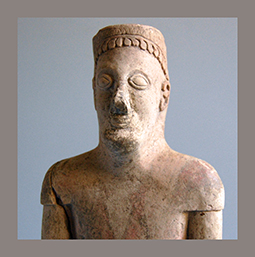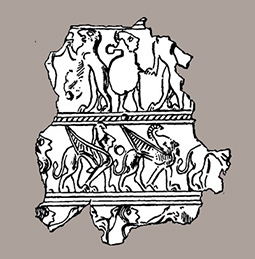Author: F. De Stefano
download article as .pdf: Sull’identificazione di un gruppo fittile arcaico dal santuario di San Biagio della Venella (Metaponto)
 The statues under study come from the sanctuary of San Biagio alla Venella, in the territory of Metaponto, and precisely from a votive deposit located inside it. For technical reasons and for their iconographic characteristics, these statues are linked by a common denominator. On the other hand, in light of these same connotations, they differ from all the other known products which constitute the corpus of the metapontine clay statuary and, more generally, from those of the Ionic area. This research proposes a specific examination of the three statues, aimed at a better understanding of their chronology and stylistic profile and their symbolic values. In particular, an exegetical aspect that will be explored concerns the hypothesis that the statues belonged to an unitary semantic system, that is to a group.
The statues under study come from the sanctuary of San Biagio alla Venella, in the territory of Metaponto, and precisely from a votive deposit located inside it. For technical reasons and for their iconographic characteristics, these statues are linked by a common denominator. On the other hand, in light of these same connotations, they differ from all the other known products which constitute the corpus of the metapontine clay statuary and, more generally, from those of the Ionic area. This research proposes a specific examination of the three statues, aimed at a better understanding of their chronology and stylistic profile and their symbolic values. In particular, an exegetical aspect that will be explored concerns the hypothesis that the statues belonged to an unitary semantic system, that is to a group.

